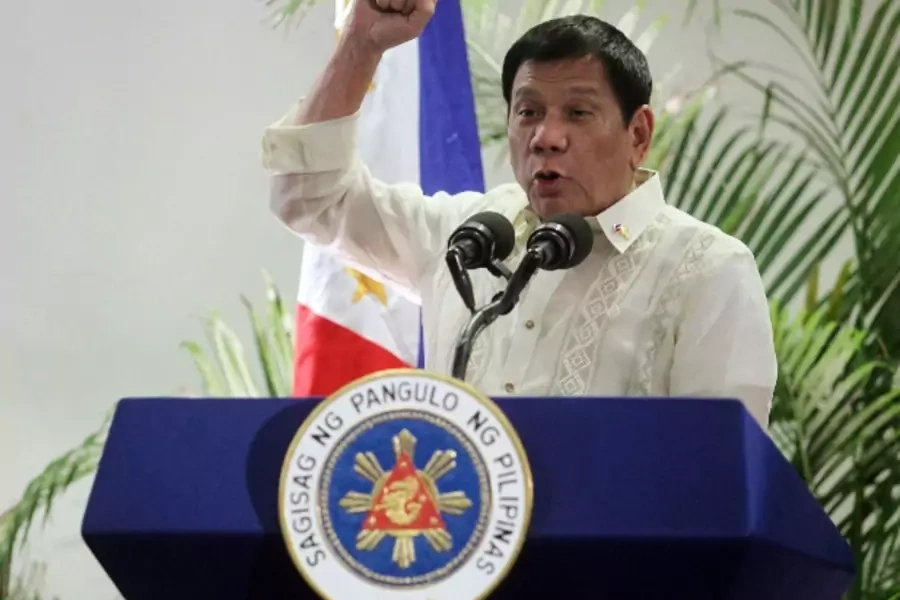Although Southeast Asia was not mentioned often during the presidential campaign, the new U.S. administration will face several imminent regional challenges. For one, the relationship between the United States and the Philippines has deteriorated significantly since the election of President Rodrigo Duterte earlier this year. Duterte has publicly blasted U.S. officials and U.S. policy in the region, suggested he wants to move Philippine foreign policy closer to China, and threatened to scale down joint military exercises. Duterte expressed seeming approval of Trump’s election, presenting a possibility to restore closer ties, but the fact that Trump—a figure with some similar characteristics as Duterte—was elected will probably not change the Philippine president’s underlying anti-American worldview. Over decades, Duterte has grown increasingly suspicious of the United States and U.S. intentions in the Philippines, and it is hard to imagine that, in his seventies, his fundamental views of the United States will change that much. The Trump administration may please Duterte by criticizing his brutal war on drugs less than its predecessor did, and the death of the Trans-Pacific Partnership (TPP) is unlikely to affect Philippine views of the United States, since the Philippines was not (yet) in the TPP. But the new U.S. administration likely will still want to pursue close bilateral ties, joint exercises, and a continuation of the new enhanced defense partnership with the Philippines, all of which Duterte apparently is skeptical of. Figuring out some way to maintain continuity in the bilateral security relationship and continue preparing the Philippine military for its own defense, while simultaneously assuring Duterte that the United States respects Philippine sovereignty and respects Duterte, will be a complex task. At the same time, the next U.S. administration will have to recognize that, even if it criticizes Duterte, it must be sure not to encourage critics within the Philippine security establishment to oust Duterte by illegal means.
In addition, the new administration in Washington will have to handle the United States’ other treaty ally in Southeast Asia, Thailand, which has been ruled by a military junta for more than two years and appears ready to hand back government to civilian leaders next year, albeit under a new constitution that will dramatically weaken the powers of elected politicians. The country’s economy is stagnating, its politics are in crisis, and like the Philippines it appears to be drawing closer, strategically, to China. The new U.S. administration will probably be less critical of any Thai government’s abuses, but it will need to shore up support within the Thai political and military leadership for a continued close bilateral security relationship. At the same time, a new U.S. administration will need to ensure that, in a time of regional crisis, the United States could count on Thailand for basing access and other critical support.
More on:
Third, the United States will have to address the increasingly contentious South China Sea issue. Countries like Vietnam, Singapore, and to a lesser extent the Philippines (under Duterte), Malaysia, and Indonesia, all fear that China is militarizing the sea and will soon be able to limit freedom of navigation in regional waters. Indeed, with some reason they fear that China’s long-term strategy is total dominance of the South China Sea. Southeast Asian nations like Vietnam, Singapore, and Indonesia have been aggressively modernizing their navies, coast guards, missile capacities, and air forces, and the incoming U.S. administration will have to decide how much to help them. This is especially true in the case of Vietnam; the United States only recently lifted the embargo on lethal arms sales to Hanoi, and Vietnamese leaders, alarmed by the Philippines’ shift toward China, may want to dramatically expand Vietnam’s U.S. arms purchases and other strategic ties.
Meanwhile, a new presidential administration that appears committed to modernizing and expanding the U.S. navy will have to decide whether to take more assertive, regular actions of deterrence in the South China Sea, as some current U.S. admirals have proposed—a plan endorsed by many top Singaporean, Vietnamese, and Australian defense specialists and naval officers. These could include more regular patrols of the South China Sea, building floating bases in the South China Sea, sending U.S. planes and ships through areas of the South China Sea every time China takes assertive steps, such as potentially announcing an air defense zone, and sanctioning Chinese companies involved in the buildup of artificial islands and military installations in the South China Sea.
Read more about how the Trump administration should approach U.S. policy toward China (here and here), Japan, Korea, and South Asia.
More on:
 Online Store
Online Store
